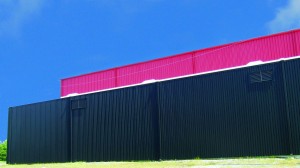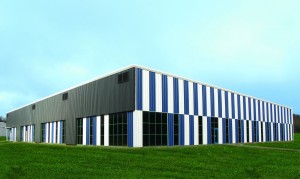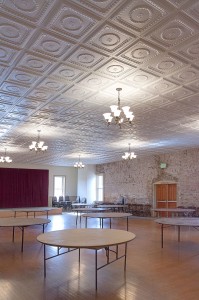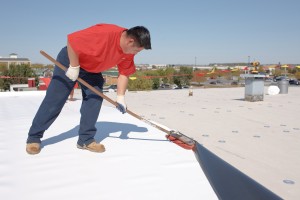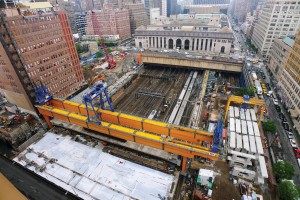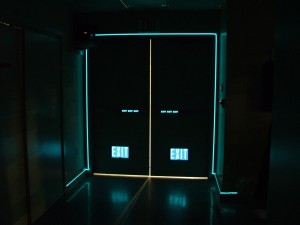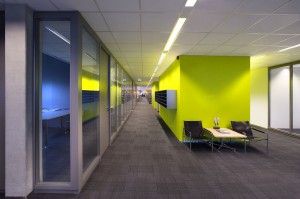The Cigas Machine Shop in Pottstown, Pennsylvania, is located in a building previously owned by the Bethlehem Steel Corporation, with parts of the structure dating back to the late 1880s.
+ Read More
|
A transpired solar collector system utilizes perforated metal wall cladding to heat outside fresh air via sunlight. This technology can help reduce winter heating costs by approximately 30 percent, qualify for government grants and incentives for renewable energy, and generally has a payback of three to eight years.
+ Read More
|
Approved drop-out ceiling panels can be installed beneath fire sprinklers. When exposed to heat from a small fire, drop-out ceiling panels soften, distort, and fall from ceiling grid. Heat from the growing fire activates sprinklers that, unimpeded by panels that have dropped out, controls or extinguishes the fire.
+ Read More
|
Thermoformed plastic ceiling panels and tiles have unique features that make them practical for many design and construction challenges. They can be installed beneath fire sprinklers and are not affected by moisture, support indoor air quality (IAQ), and offer noise reduction.
+ Read More
|
Well-designed and properly managed public spaces—such as high-rises, airports, shopping malls or hospitals—can enable social interaction and promote a better lifestyle. Already, half the world’s population lives in urban areas, and the United Nations estimates that five billion people will be living in cities by 2030.
+ Read More
|
Light-emitting diodes (LED) are becoming increasingly popular due to the ever-present emphasis on reducing project costs. With numbers of LED installations rising, it is imperative that architects, engineers, and specifiers are able to evaluate the benefits of LED technology.
+ Read More
|
As building codes and environmental trends continue to evolve, so too does the diversity of roofing material options. These factors, along with others, make construction specifiers’ roofing installation and selection prowess of utmost importance. Among the available choices is thermoplastic polyolefin (TPO).
+ Read More
|
The Manhattan West Platform is the first stage in a vibrant urban development that will serve as the foundation for public and new commercial space. This article discusses the unique structural challenges in designing an innovative platform structure over the tracks leading into New York City’s Penn Station.
+ Read More
|
Electro-luminescence (EL) indicates an electric-powered, uninterrupted light source that increases visibility to locate exit doors. EL systems are mounted in flexible tube and channel housing to fully integrate into an interior design esthetic.
+ Read More
|
Stone wool’s various attributes are making the material attractive for use in suspended ceilings in educational, office, and healthcare projects. This article touches on such assemblies’ acoustics, air quality and light reflection impacts, along with information about fire performance, humidity, and dimensional stability.
+ Read More
|
|
|


